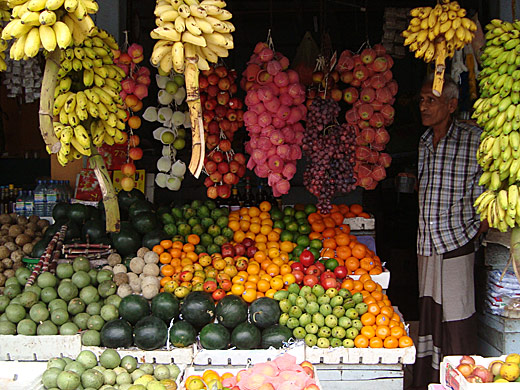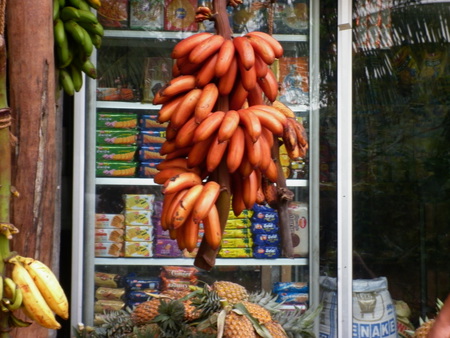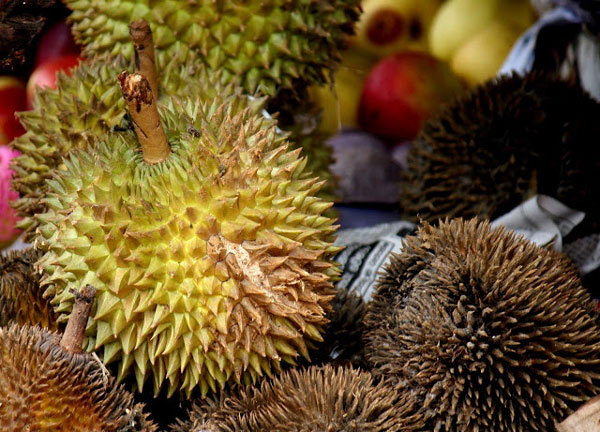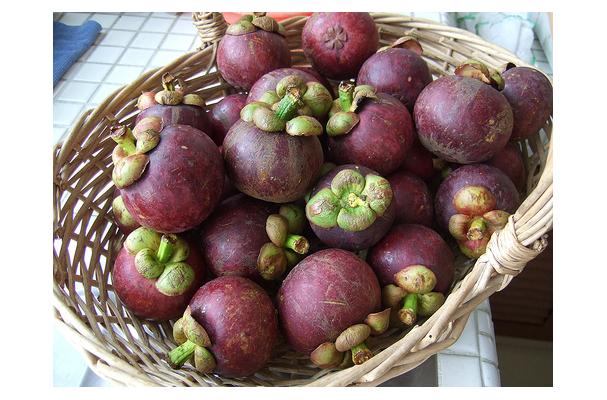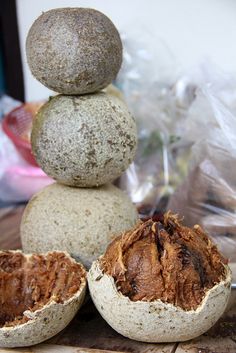The Exotic Delights of this Fruitful Island
From the humble banana to the notorious durian Sri Lanka boasts numerous exotic fruits and the local markets are awash with colour.
Fresh fruit – especially the ever-popular pineapple, banana and papaya – often comprise dessert in Sri Lanka. Yet, there are so many other, more exotic varieties available, as a visit to any pola (market) will confirm. If you have not yet acquired a taste for tropical fruit then Sri Lanka is a great place to do so. Below is a check list of just some of the fruit grown on the island.
Banana – In Sri Lanka the name plantain is often used interchangeably with banana. This fruit is a general favourite, served to complete any meal and at special occasions. Usually it is eaten straight from the skin at the table. Bananas come in many sizes, and can be green, yellow or even red in colour. Some of the most popular varieties are:
Ambul – small, yellow when ripe: sweet and sticky
Kolikuttu – yellow when ripe: sweet and starchy
Anamalu – long, bright green when ripe: slightly floury
Seeni kesel – small, yellow when ripe: very sweet
Rath kesel – thick, red when ripe: very fleshy
Custard apple – Four varieties of custard apple are grown in Sri Lanka and each has an unmistakable flavour, whether sweet or tart. The custard apple is a lumpy light green fruit with a sweet, custard-like white pulp embedded with black seeds. The bullock’s heart is a lumpy pink fruit, which is not as popular as the other varieties because of its granular texture. The cherimoya is a lumpy, green fruit with a pulp similar to the custard apple but with a more subtle fragrance. The soursop is a green, kidney-shaped fruit with a pulp redolent of the custard apple, but having a more characteristic texture.
Durian – The durian is probably the most notorious of tropical fruits due to its unpleasant odour. This fruit, which is round to ovoid and covered with sharp spines, has a white, custard-like pulp regarded as an aphrodisiac. It is one of those things in life you either love or hate. You either find the fruit delicious, or you loathe it without eating it, unable to surmount the olfactory barrier. For the uninitiated, it is best to try it creamed as custard.
Mango – The premier fruit in the island must surely be the mango, which also comes in a wide variety. Outlines can vary from the classic mango shape, as depicted in the paisley pattern in textiles, to an almost perfect sphere. Size also varies. For instance, the wild mi-amba is tiny, while the pol-amba (pol = coconut) is truly as large as the nut it is named after. Much the same can be said for the skin, which can be green, yellow, orange, pink, or even scarlet. The juicy peach-like flesh can be sweet or have a hint of tartness. Some of the most popular varieties are:
Pol amba – large round fruit with small stone: very fleshy
Kartha kolabun – long ovoid: rich and sweet
Yapanne amba – long, narrow mango: very sweet
Gira amba – tip shaped like a parrots beak
Mee amba – one of the smallest: very sweet
Vilard – red when ripe
Mangosteen – Mangosteens are a particularly striking fruit, with a perfectly round shape, deep purple skin and crowned by a contrasting green calyx. Broken open between the palms of the hand, the fruit reveals a nest of delicious, sweet-sour fleshy white segments with the flavour of strawberry and grape. Mangosteens are commonly sold by the roadside at Kalutara and Peradeniya.
Papaya – Considered one of the classic tropical fruits, papaya or papaw can be small or large. When cut lengthways, a golden melon-like flesh is revealed, lined with a mass of black seeds. After sweeping off the seeds with a spoon, squeeze half a lime over it and enjoy the sweet yet subtle taste of this unique fruit, which is considered excellent for the health. Papaya is often served at breakfast having been first chilled in the fridge. It is also pickled and used in curries when unripe.
Pineapple – Pineapples in Sri Lanka are generally small but thirst-quenching. The medium-sized Mauritius variety, with its slender body and amber coloured skin, is an ideal balance between sweetness and tartness. The larger Kew variety, squat and green, is canned, and also used for making pineapple jam and pineapple juice. A variety of pineapple known as ‘rock pineapple’, which is green and smaller than the Mauritius or Kew, grows wild in Sri Lanka.
Rambuttan – This fruit, whose Malay name means ‘spiny’, is scarlet, maroon or golden-skinned and covered with short, fleshy hairs. Inside there is a mouth-watering translucent, sweet-sour pulp, which like that of its relative, the better-known lychee, covers the single seed. The pulp is sweeter in the better varieties, those in which it easily peels off the seed being preferred.
Woodapple – The woodapple is a hard-shelled fruit, a favourite with elephants. In fact it is so hard a hammer has to be used to break it. The truffle-like pulp within has a pungent smell, but it has an agreeable, slightly sweet-sour taste. The pulp is eaten with salt, although the most popular preparation is a drink called divul kiri made with the pulp, treacle and coconut milk. A fruit cream made with the pulp and condensed milk is also popular, as is woodapple jam.
